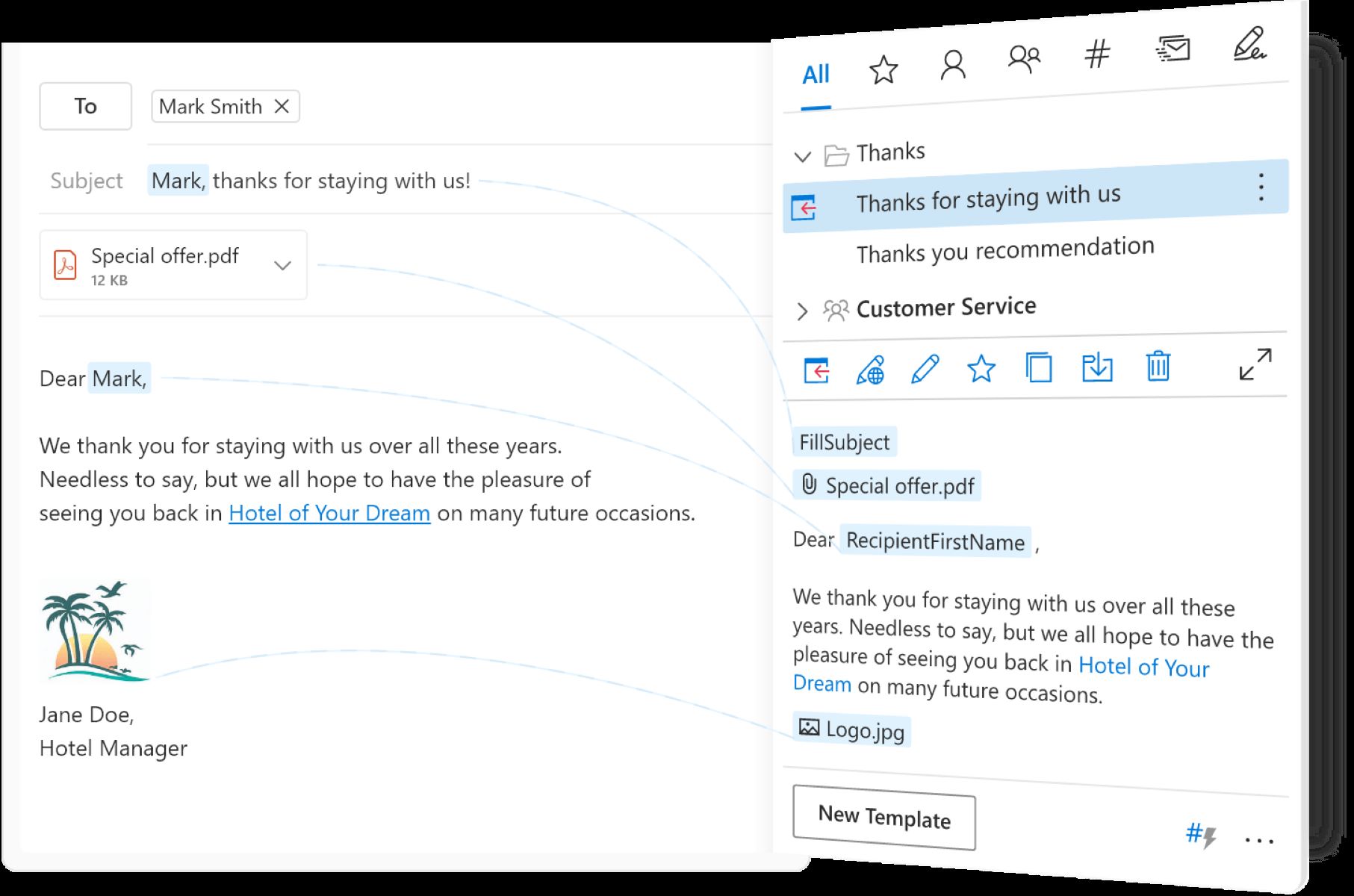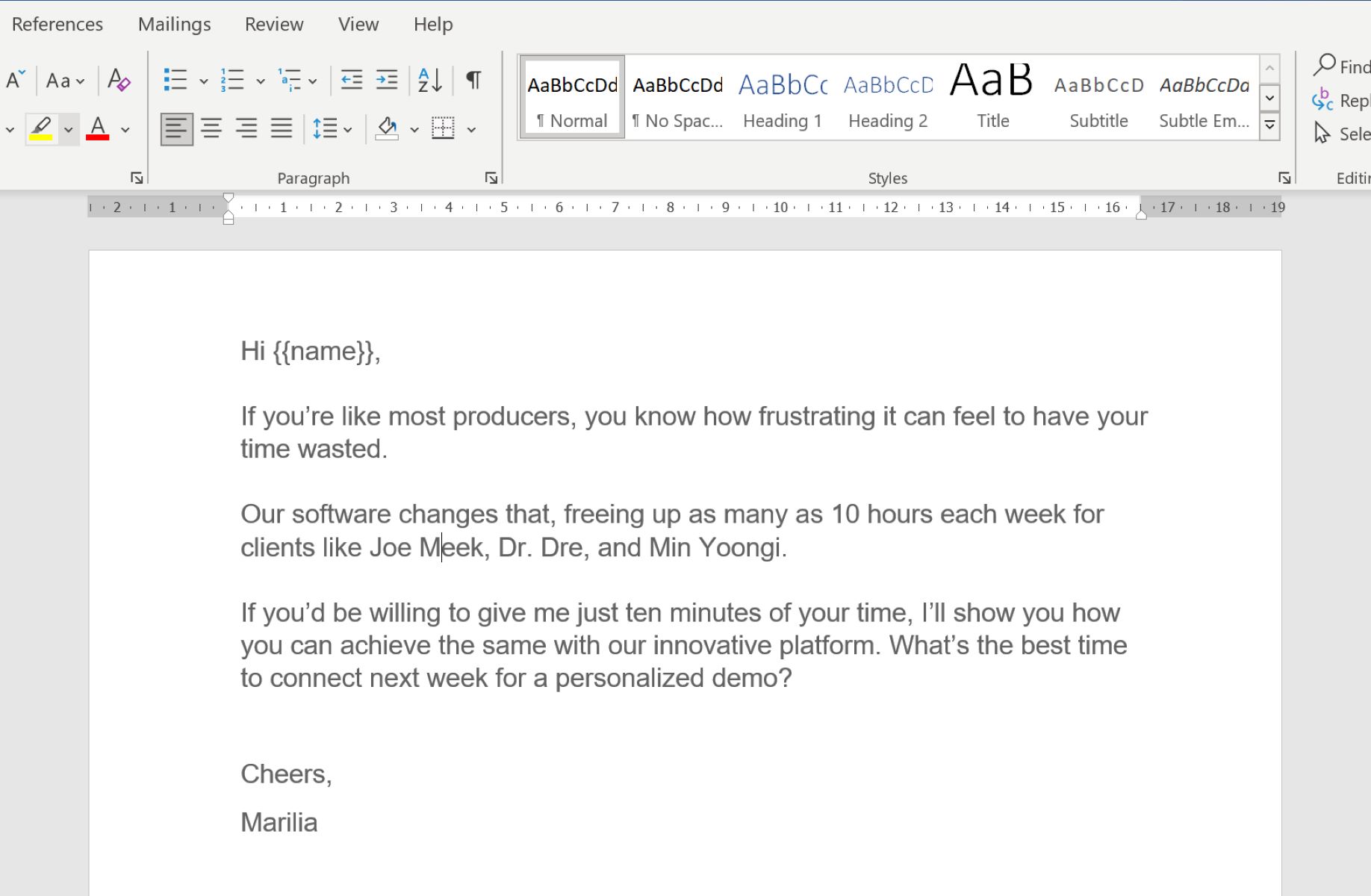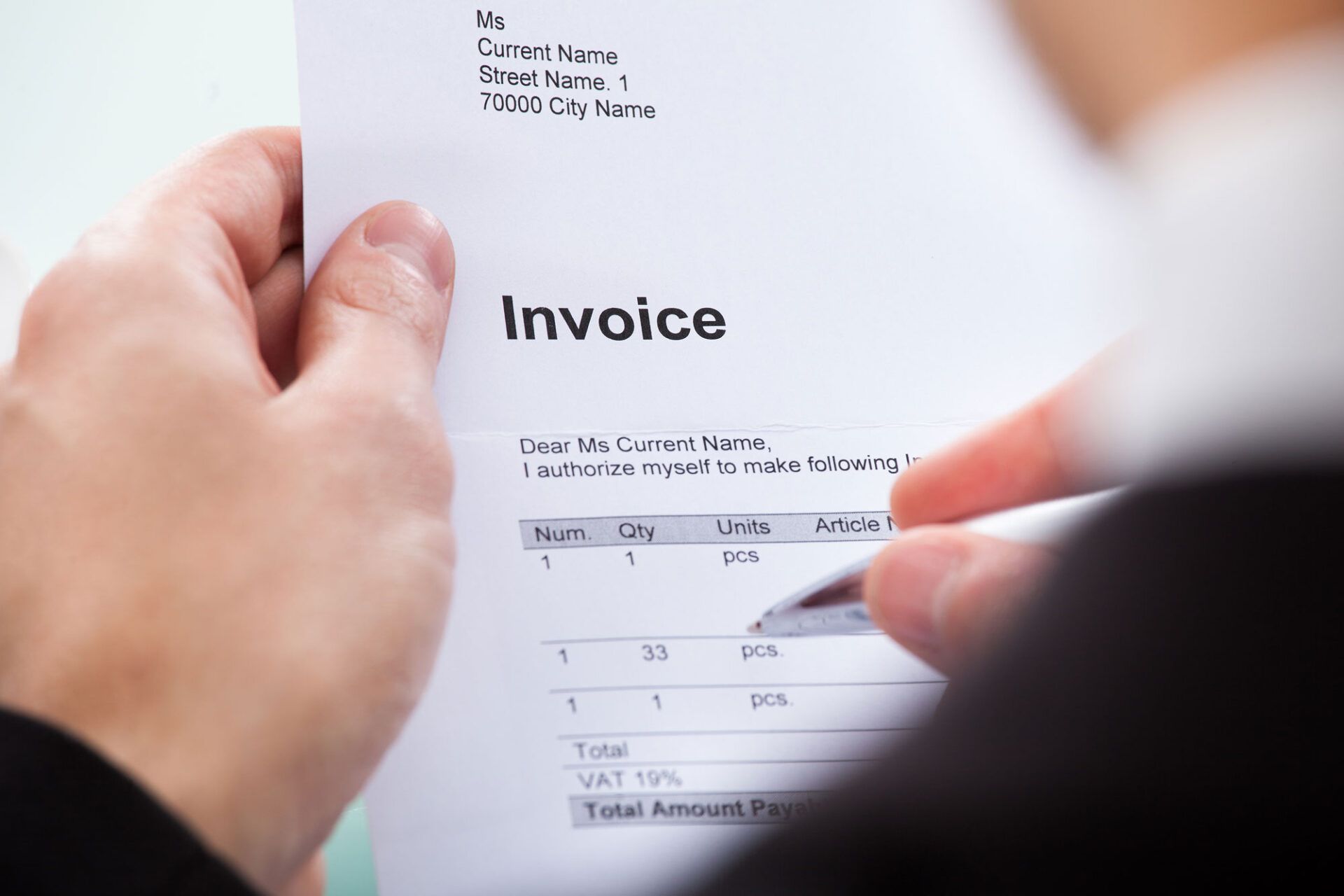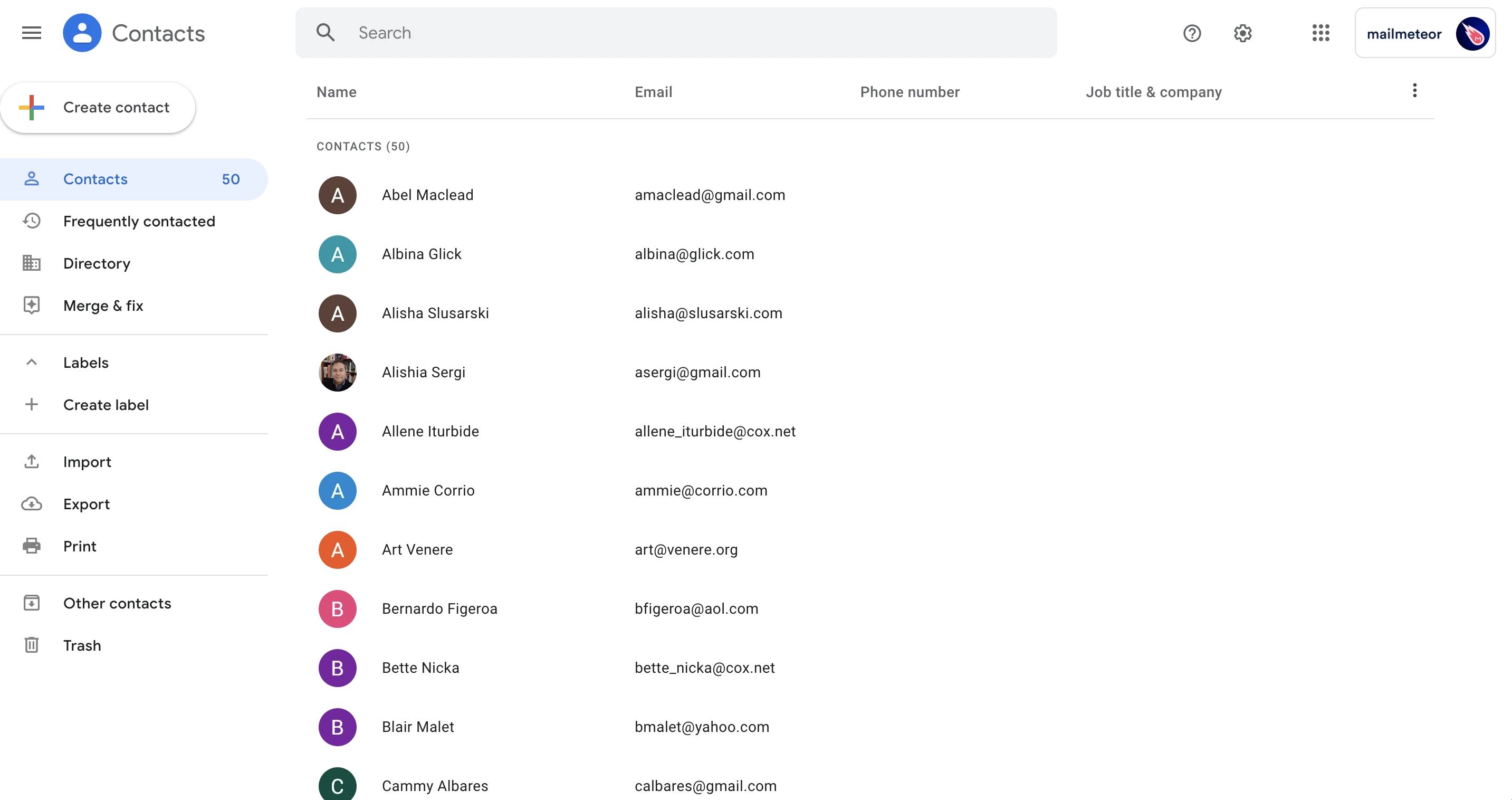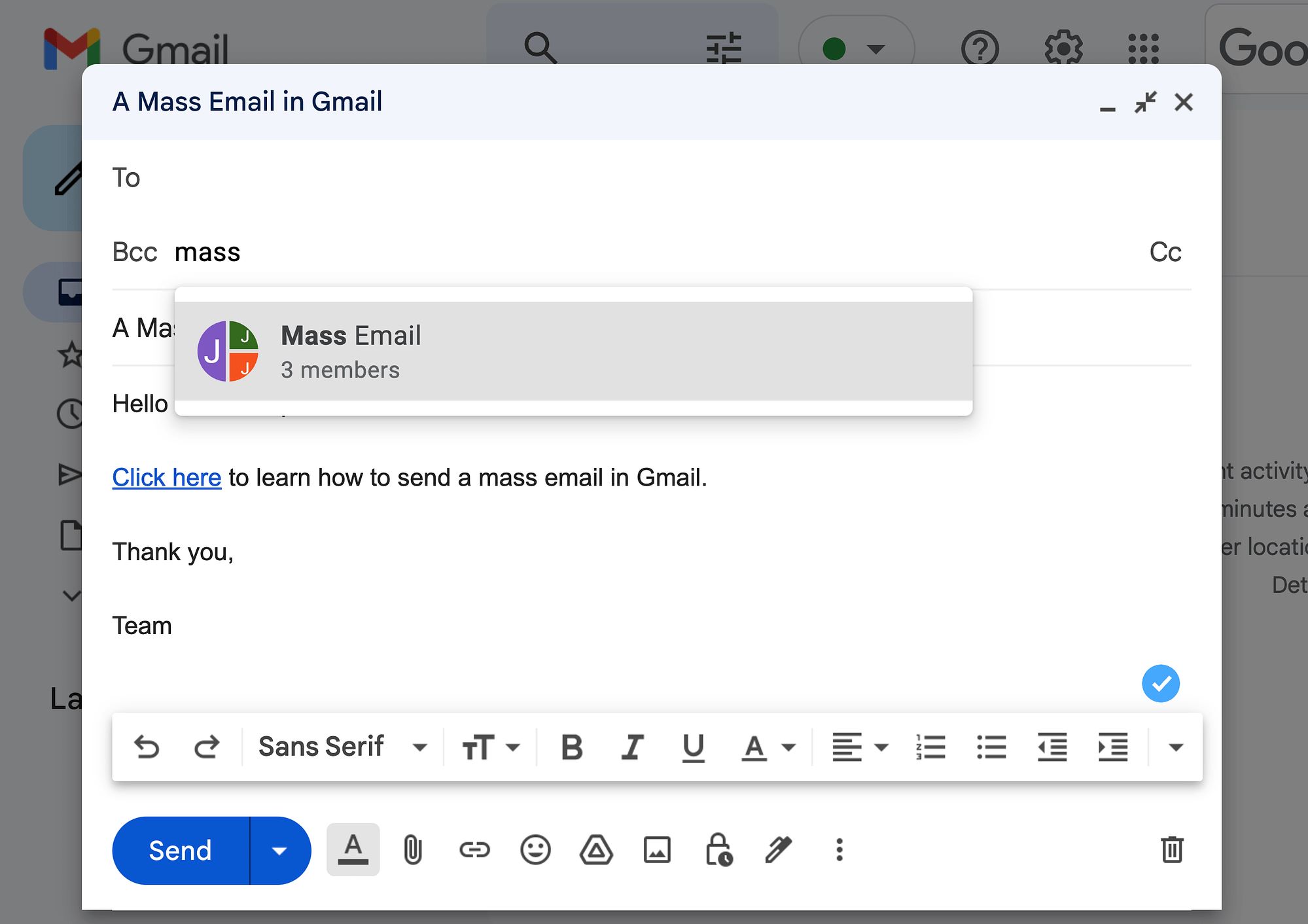Introduction
Welcome to the world of email marketing! In today’s digital age, email continues to be one of the most effective and widely used communication channels. Whether you are a business owner, marketer, or simply looking to connect with your audience, creating well-designed and engaging email templates is crucial to success.
However, crafting a compelling email message from scratch every time can be time-consuming and often leads to inconsistent branding. This is where email templates come in handy. An email template provides a pre-designed framework that you can easily customize and reuse for different campaigns, saving you time and ensuring a consistent and professional look across all your emails.
Why use email templates, you may ask? Firstly, they provide a solid foundation for your email campaigns. Instead of starting from scratch and trying to come up with the perfect layout and design every time, using templates allows you to focus on the content and message. It streamlines the process, making it more efficient and repeatable.
Secondly, email templates help maintain brand consistency. By using the same template across all your communications, you establish a familiar look and feel that aligns with your brand identity. This builds trust with your recipients and reinforces your brand image in their minds.
Lastly, templates can be customized to cater to specific goals and target audiences. You can easily adapt them for different purposes, such as promotional offers, newsletters, event invitations, or transactional emails. This flexibility ensures that your messages are tailored to your recipients’ needs and preferences, increasing the chances of engagement and conversion.
Whether you are a beginner or an experienced email marketer, this guide will take you through the process of creating effective email templates. From planning and designing to customizing and testing, you will learn the essential steps to create visually appealing and impactful email templates that will resonate with your audience and drive results.
So, let’s dive in and explore the exciting world of email template creation!
Why Use Email Templates
Email templates offer numerous benefits and advantages for businesses and marketers. Here are some key reasons why you should consider using email templates:
- Time-saving: Creating a well-designed email from scratch can be time-consuming, especially if you have multiple campaigns to manage. Email templates provide a ready-made structure that you can easily customize to fit your needs, saving you valuable time and effort.
- Consistent branding: Brand consistency is crucial for building trust and recognition. By using email templates, you can ensure that every email sent aligns with your brand’s visual identity, including color schemes, logos, fonts, and overall design aesthetic. This consistent branding helps reinforce your brand image in the minds of your recipients.
- Efficient campaign management: Email templates simplify the process of creating and managing email campaigns. With a template, you have a reusable framework that you can adapt for different purposes, such as promotional emails, newsletters, or transactional messages. This streamlines your workflow and allows you to focus on crafting impactful content rather than starting from scratch each time.
- Personalization: Despite using a template, you can still tailor your emails to make them more personalized and relevant to your recipients. Many email template tools offer features that allow you to dynamically insert personalized content, such as the recipient’s name or recent purchase history. This personalization helps to engage your audience and improve the chances of conversion.
- Consistent messaging: Email templates enable you to maintain a consistent message across all your communications. By using predefined sections and layouts, you can ensure that key information, such as your company’s value proposition or call-to-action, is consistently presented in every email. This helps in reinforcing your core messaging and guiding your audience towards desired actions.
- Data-driven optimization: Email templates make it easier to track and analyze the performance of your campaigns. By using the same template for A/B testing or segmenting your audience, you can gather valuable data to optimize your future email marketing efforts. This data-driven approach allows you to make informed decisions and continually improve the effectiveness of your email campaigns.
- Professional and polished appearance: With email templates, you don’t need to be a design expert to create visually appealing emails. The templates provide a professional and polished appearance that reflects positively on your brand. This helps to establish credibility and make a lasting impression on your recipients.
By utilizing email templates, you can streamline your email marketing efforts, maintain brand consistency, and maximize the impact of your campaigns. Whether you are a small business or a large corporation, email templates are a valuable tool to enhance your communication with customers and prospects. So why reinvent the wheel with every email when you can benefit from the efficiency and effectiveness of email templates?
Planning Your Email Template
Before you dive into designing your email template, it’s important to plan and strategize your approach. Taking the time to plan will ensure that your email template aligns with your goals and effectively communicates your message. Here are some key steps to consider when planning your email template:
- Define your objective: Start by identifying the purpose of your email template. Are you sending a promotional offer, a newsletter, or a transactional email? Clearly define the objective of your email to guide the design and content creation process.
- Know your target audience: Understanding your target audience is essential for creating a relevant and engaging email template. Consider their preferences, demographics, and behavior when planning your template. This will help you customize the design and content to resonate with your recipients.
- Set your brand guidelines: Ensure that your email template aligns with your brand’s visual identity. Define your brand guidelines, including colors, fonts, logos, and overall design style. This will help to maintain consistency and reinforce your brand image in your email communications.
- Outline your content: Decide on the key sections and elements you want to include in your email template. Consider the hierarchy of information and how you want to guide your recipients’ attention. This will help you organize the content and create a logical flow within your email.
- Create a wireframe: Sketch out a rough wireframe or layout of your email template. This will help you visualize the structure and placement of different elements, such as the header, body, footer, and call-to-action buttons. A wireframe provides a blueprint for your design process.
- Mobile responsiveness: With the majority of emails being opened on mobile devices, it’s crucial to ensure that your email template is mobile-responsive. Consider how your design and content will adapt to different screen sizes and optimize for a seamless mobile experience.
- Include a strong call-to-action: Every email should have a clear and compelling call-to-action (CTA). Determine the primary action you want recipients to take and design the CTA accordingly. Make it stand out, use persuasive language, and provide a sense of urgency to encourage click-throughs.
- A/B testing: Plan for A/B testing to optimize your email template’s performance. Test different variations of subject lines, CTAs, visuals, and content to see what resonates best with your audience. A/B testing allows you to make data-driven decisions and improve the effectiveness of your emails.
By effectively planning your email template, you set the groundwork for a successful and visually appealing design. Consider your objectives, target audience, brand guidelines, content structure, and mobile responsiveness to create a template that grabs attention, engages recipients, and drives desired actions.
Choosing the Right Email Template Tool
When it comes to creating email templates, having the right tool can make a significant difference in terms of efficiency and effectiveness. There are various email template tools available, each offering different features and capabilities. Here are some important factors to consider when choosing the right email template tool for your needs:
- Ease of use: Look for an email template tool that is user-friendly and intuitive. You want a tool that allows you to easily customize and design your email templates without requiring extensive technical knowledge or coding skills.
- Template library: Check if the tool provides a library of pre-designed templates that you can use as a starting point. Having access to a variety of templates gives you the flexibility to choose a design that aligns with your brand and saves time in the creation process.
- Customization options: Consider the level of customization options available in the tool. Look for features that allow you to personalize your templates, such as the ability to add your own branding elements, change colors and fonts, and rearrange layout elements.
- Responsive design: It’s crucial to choose an email template tool that supports responsive design. Responsive templates automatically adapt to different screen sizes and devices, ensuring a seamless user experience for both desktop and mobile users.
- Integration with email service providers (ESPs): If you use an ESP to send your emails, make sure the template tool seamlessly integrates with your provider. This allows you to easily transfer your finished templates into your email marketing platform and streamline your workflow.
- Testing and preview options: Look for tools that offer testing and preview options. This allows you to see how your templates will appear in different email clients and devices before sending them out, ensuring that they display correctly and are optimized for maximum deliverability.
- Analytics and reporting: Consider whether the tool provides analytics and reporting features. This allows you to track the performance of your email templates, monitor open rates, click-through rates, and other metrics. These insights help you measure the success of your campaigns and make data-driven decisions for future optimizations.
- Customer support: Lastly, consider the level of customer support offered by the email template tool provider. Look for tools that provide responsive customer support through documentation, tutorials, or live chat to assist you in case you encounter any issues or have questions during the template creation process.
Consider these factors and evaluate different email template tools based on your specific needs and requirements. It’s also worth trying out free trials or demo versions of the tools to get a hands-on experience and determine which tool offers the best combination of features and usability for your email template creation.
Designing Your Email Template
Designing your email template is a crucial step in creating visually appealing and engaging emails. A well-designed template sets the tone, represents your brand, and captures the attention of your recipients. Here are some key considerations when designing your email template:
- Keep it clean and simple: A cluttered and complex design can overwhelm your readers and distract from your message. Opt for a clean and simple layout that allows the content to shine. Use white space strategically to guide the eyes and create a sense of balance.
- Use a consistent brand identity: Ensure that your email template reflects your brand’s visual identity. Use your company logo, color palette, typography, and other brand elements consistently throughout the email. This consistency helps to strengthen brand recognition and build trust with your audience.
- Make it mobile-responsive: With a significant portion of emails being opened on mobile devices, it’s crucial to design your template with mobile responsiveness in mind. Optimize your email for smaller screens, ensuring that the layout and content adapt seamlessly to different devices.
- Choose fonts wisely: Select fonts that are easy to read and align with your brand’s personality. Stick to web-safe fonts to ensure compatibility across different email clients. Use a combination of font sizes, weights, and styles to create visual hierarchy and guide readers through your email.
- Use attention-grabbing visuals: Incorporate relevant and high-quality visuals that complement your message. Include engaging images, icons, and graphics that capture attention and enhance the overall visual appeal. However, be mindful of image file sizes, as larger files can slow down load times.
- Highlight your call-to-action (CTA): Ensure that your primary CTA stands out and is easily clickable. Use contrasting colors, larger font sizes, and prominent placement to draw attention to your CTA button or link. Make it clear and compelling, using persuasive language that encourages action.
- Consider text-to-image ratio: Some email clients may block images by default. To ensure that your message is still effectively conveyed, balance your text-to-image ratio. Include alt text for images, and use HTML and CSS techniques to stylize your email even when images are disabled.
- Make it scannable: Most readers quickly scan emails rather than reading every word. Use headings, subheadings, bullet points, and short paragraphs to make your email easily scannable. Highlight important information and key takeaways, making it easier for recipients to grasp the main points.
- Test across different email clients: Test your email template across various email clients and devices to ensure that it displays correctly and consistently. Different email clients may render emails differently, so it’s important to check for any formatting issues or discrepancies.
Remember that a well-designed email template not only looks visually appealing but also enhances the user experience and encourages engagement. By considering these design principles and best practices, you can create an email template that captures attention, delivers your message effectively, and drives the desired actions from your recipients.
Customizing Your Email Template
Customizing your email template allows you to tailor it to your specific campaign, audience, and branding. By personalizing your template, you create a unique and engaging email that resonates with your recipients. Here are some key aspects to consider when customizing your email template:
- Add your branding elements: Incorporate your company logo, colors, and fonts into the email template. This helps to reinforce your brand identity and creates a consistent look throughout your email communications.
- Customize the header and footer: Use the header and footer sections to showcase your branding, contact information, social media links, and unsubscribe options. Make sure the header and footer are visually appealing and match the overall design of your template.
- Personalize your content: Use merge tags or dynamic fields to personalize your email content. Include the recipient’s name, location, or other relevant information to create a more personalized and engaging experience for them.
- Segment your audience: If you have different segments or target audiences, consider creating variations of your email template to cater to their specific needs. This allows you to deliver more targeted and relevant content to different recipients, increasing the likelihood of engagement.
- Optimize your subject line: Customize your subject line to grab attention and entice recipients to open your email. Experiment with different subject lines and use language that appeals to your target audience’s interests and pain points.
- Add social sharing buttons: Make it easy for recipients to share your email content on social media platforms by including social sharing buttons. This expands your reach and can lead to increased engagement and brand exposure.
- Include dynamic content: Consider adding dynamic content blocks that change based on recipient preferences or behavior. For example, show personalized product recommendations or highlight recently viewed items to create a tailored experience for each recipient.
- Optimize for accessibility: Ensure that your email template is accessible to all recipients, including those with disabilities. Use alt text for images, provide clear and concise descriptions for links, and ensure proper color contrast for text and backgrounds.
- Localized content: If you have a global audience, consider customizing your email template to include localized content. This can include language variations, localized offers, or references to local events or holidays.
- Test before sending: Test your customized email template thoroughly before sending it out. Check for any broken links, formatting issues, or rendering problems across different email clients and devices. This ensures that your customized template looks and functions as intended.
Customizing your email template allows you to create a personalized and relevant experience for your recipients. By incorporating your branding, personalizing content, and tailoring the template to your audience, you can maximize engagement and achieve better results with your email campaigns.
Adding Dynamic Content to Your Email Template
Adding dynamic content to your email template allows you to create personalized and highly engaging email experiences for your recipients. By dynamically customizing the content based on recipient data, preferences, or behavior, you can deliver more targeted and relevant messages. Here are some effective ways to incorporate dynamic content into your email template:
- Personalized greetings: Begin your email with a personalized greeting that includes the recipient’s name. This simple but effective tactic helps to create a more personalized and engaging connection with your readers.
- Dynamic subject lines: Customize your subject lines to be more relevant and compelling for different segments of your audience. Use merge tags or dynamic variables to insert recipient-specific information, such as their location, recent actions, or purchase history.
- Product recommendations: If you have an e-commerce business, consider including personalized product recommendations in your email template. Use past purchase history, browsing behavior, or collaborative filtering to suggest products that are likely to interest individual recipients.
- Abandoned cart reminders: For recipients who have abandoned their shopping carts, use dynamic content to send targeted reminders. Include the specific items left in their carts along with any limited-time offers or incentives to encourage them to complete their purchase.
- Dynamic countdown timers: Create urgency and a sense of exclusivity by incorporating dynamic countdown timers in your emails. Use them to highlight limited-time offers, flash sales, or expiring discounts to entice recipients to take immediate action.
- Location-specific information: Customize your email content based on the recipient’s location to provide relevant information, such as local events, store locations, or special offers specific to their geographic area. This personalization approach helps to increase engagement and relevance.
- Dynamic social media feeds: Enhance your email content by embedding dynamic social media feeds. Feature recent posts or user-generated content from your social media channels to provide real-time updates and social proof.
- Dynamic pricing: If you offer personalized pricing or pricing tiers based on customer segments or loyalty levels, dynamically display the relevant pricing information in your email. This targeted approach helps to increase customer satisfaction and drive conversions.
- Event reminders and RSVPs: If you are hosting an event, dynamically include personalized event reminders, RSVP options, and personalized schedule information. This helps to create a sense of exclusivity and encourages recipients to engage with your event.
- Smart content based on behavior: Use dynamic content blocks to display relevant content based on the recipient’s previous interactions or behaviors. For example, show different content for new subscribers, loyal customers, or those who have recently engaged with specific products or services.
Adding dynamic content allows you to tailor your email template to each recipient’s preferences and behaviors. By providing personalized and relevant information, you can significantly improve engagement, conversion rates, and overall campaign success.
Testing Your Email Template
Testing your email template before sending it out is a crucial step to ensure that it displays correctly, functions properly, and delivers the best possible experience to your recipients. Here are some key aspects to consider when testing your email template:
- Preview across different email clients and devices: Test your email template across various email clients, such as Outlook, Gmail, Apple Mail, and mobile devices. Different clients may render emails differently, so it’s important to check for any formatting issues, broken layouts, or elements that may not display as intended.
- Check for responsive design: Verify that your email template is mobile-responsive and adjusts well to different screen sizes. Test it on various devices, including smartphones and tablets, to ensure that the layout and readability are consistent across all platforms.
- Click through and test links: Click on all links within your email to make sure they are working correctly and directing recipients to the intended landing pages. Check for any broken links or formatting issues that may affect the user experience.
- Test dynamic content: If your email template includes dynamic content, such as personalized recommendations or countdown timers, test that they are correctly rendering and updating based on the recipient’s data or behavior.
- Check for spam triggers: Run your email through a spam checker tool to identify any potential issues that may cause your email to be flagged as spam. Pay attention to factors like subject lines, excessive use of capital letters or exclamation marks, and spam-triggering keywords.
- Test different email clients: If you have a diverse subscriber base, choose a group of representative subscribers and send test emails to different email clients they use. This will help you identify any client-specific issues and make necessary adjustments.
- Review content for errors: Check your email template thoroughly for any spelling or grammatical errors. Proofread the content, including the subject line, body, and call-to-action text, to ensure that it is error-free and aligns with your intended message.
- Test load time: Ensure that your email template loads quickly to provide a seamless user experience. Large images or excessive code can negatively impact load times. Optimize image sizes and simplify your code to enhance performance.
- Test in plain text format: Some recipients may have their email clients set to display messages in plain text. Test how your email template appears in plain text format to ensure that the message is still readable and conveys the necessary information effectively.
- Send test emails to different devices: Send test emails to a variety of devices and email accounts to see how your template renders and whether any issues arise that need to be addressed. Check both the desktop and the mobile experience to ensure consistency.
By conducting thorough testing, you can identify and resolve any issues before sending your email template to your subscribers. This ensures that your emails are delivered correctly, display properly across different platforms, and provide a seamless and engaging experience for your recipients.
Finalizing and Sending Your Email Template
After designing, customizing, and testing your email template, it’s time to finalize it and prepare for sending it to your subscribers. Here are some important steps to consider when finalizing and sending your email template:
- Proofread and review: Before sending your email, carefully review the content, subject line, and any linked URLs to ensure they are accurate, error-free, and align with your intended message.
- Segment your audience: If you have different customer segments, consider sending targeted versions of your email template to specific segments based on their preferences and behaviors. This allows for greater personalization and relevance.
- Choose the right sending time: Consider the optimal time and day to send your email. Analyze past data or perform A/B testing to determine when your subscribers are most likely to engage with your emails for higher open and click-through rates.
- Set up tracking and analytics: Implement tracking mechanisms, such as UTM parameters or email marketing analytics tools, to monitor the performance of your email template. Measure key metrics like open rates, click-through rates, and conversions to evaluate the success of your campaign.
- Comply with legal requirements: Ensure that your email complies with applicable spam laws and regulations, including providing recipients with a clear way to opt-out of further emails. Familiarize yourself with the requirements in your region to avoid any legal issues.
- Personalize the sender name: Use a recognizable sender name that aligns with your brand identity and builds trust with your recipients. Avoid generic or spammy sender names to increase the chances of your email being opened and read.
- Add a compelling preheader: Craft a persuasive preheader that complements the subject line and entices recipients to open your email. The preheader is the preview text that appears alongside the subject line in many email clients.
- Optimize for deliverability: Pay attention to email deliverability best practices to ensure that your email reaches your subscribers’ inboxes. Avoid spam trigger words, use a reputable email service provider, and maintain a healthy sender reputation to improve deliverability rates.
- Perform a final test: Before sending your email to your entire subscriber list, send a final test email to yourself or a small group of internal recipients. Double-check that everything looks and functions as intended, including links, images, and dynamic content.
- Hit send: Once you are satisfied with your final test, it’s time to send your email! Be sure to schedule or send the email at the chosen time and date based on your audience’s preferences and behaviors.
By following these steps, you can confidently finalize and send your email template to your subscribers. Remember to periodically review and analyze the performance of your emails to optimize future campaigns and continue delivering valuable content to your audience.
Conclusion
Creating and customizing email templates is an essential skill for effective email marketing. With the right planning, design, and customization, you can create visually appealing and targeted emails that engage your subscribers and drive the desired actions. Here’s a recap of the key steps to follow:
First, plan your email template by defining your objective, understanding your target audience, and outlining your content. This ensures that your template aligns with your goals and effectively communicates your message.
Next, choose the right email template tool that offers ease of use, customization options, responsive design, and integration with your email service provider. This ensures a seamless and efficient email creation process.
When it comes to design, keep it clean and simple, incorporate consistent branding elements, and optimize for mobile responsiveness. Captivate your recipients with attention-grabbing visuals, highlight your call-to-action, and make your email scannable.
Customize your template by adding branding elements, personalizing content, including dynamic sections, and optimizing for different segments of your audience. This helps to create a personalized and relevant experience for each recipient.
Before sending your email, thoroughly test it across different email clients and devices, check for responsive design, verify links and dynamic content, and review for any errors or issues. This ensures that your email displays correctly, functions properly, and delivers a seamless user experience.
Finally, finalize your template by proofreading, segmenting your audience, choosing the right sending time, setting up tracking and analytics, complying with legal requirements, and optimizing for deliverability. Once you’ve gone through these steps, hit send and start engaging with your subscribers.
Remember, email templates are a valuable tool for saving time, maintaining brand consistency, and delivering targeted and engaging content to your audience. Continuously monitor and analyze the performance of your emails, adapt your templates for optimization, and keep refining your email marketing strategy for maximum impact.
With these guidelines and best practices, you are well-equipped to create and customize effective email templates that will captivate your audience, enhance your brand image, and drive the success of your email marketing campaigns.







